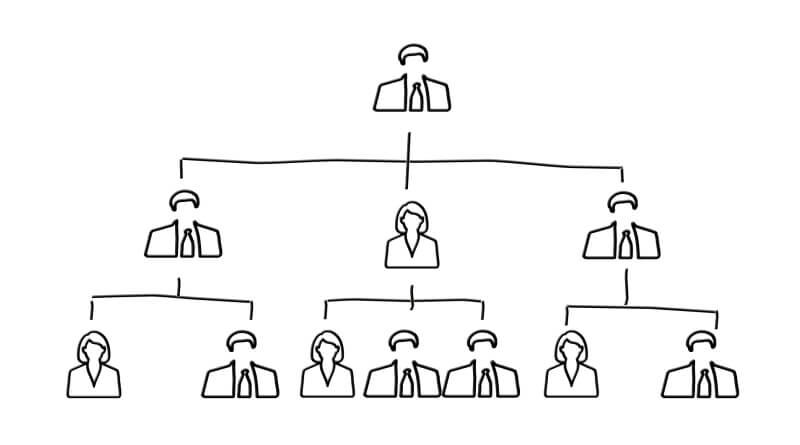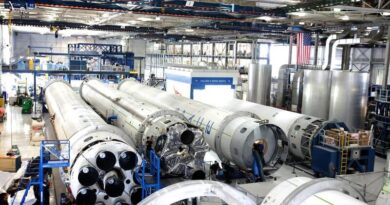Importance of Chain of Command and What is a chain of command?
Hierarchy is very important in any organization. From top to bottom, it defines and establishes the relationships in the organization, ensuring that everything works in a coherent and efficient way.
This point shows the importance of a chain of command for organizations; it not only establishes the hierarchy of responsibility for management or accountability but also the lines of authority and the decision-making power within the entity.
A correct chain of command ensures that every task and every job. Every department has a person who takes responsibility for their performance.
Let’s see how it works and why it continues to be something essential for the modern organization, even with the great changes in the digital era.
Table of Contents
What is a chain of command?
The chain of command is the line of authority that extends from the highest strategic and organizational levels to the lowest operational levels.
It’s the direction from which the organization exercises the authority and policies for each individual that has a part in it. It involves superior-to-subordinate relationships. With a downward flow of orders and information toward inferior levels.
That means that it distinguishes a specific division of functions and also establishes the hierarchical levels of the organization, be it a business or non-profit organization.
Importance of the chain of command for different organizations

As an example from the business field, each employee in the chain of command is responsible for a specific area of the company. Supervisors or operation managers must ensure that workers complete production tasks and activities. While senior management employees must develop plans to reduce lead time in production, for example.
A well-established chain of command creates efficiency when it’s used to report problems, communicate with personnel, and improve efficiency. In certain cases, it might be more efficient to report problems to the supervisors or managers at the lowest level. Instead of escalating problems to higher levels of management.
Now, the chain of command doesn’t necessarily need to be always the same for every type of organization, as we’ll see below. Let’s see more in detail its importance in different fields of activity.
1 Importance of chain of command in the military

Military personnel uses a straightforward chain of command where high-ranked personnel gives orders only to those directly below them. And receive orders only from those directly above them. This type of chain of command is the most usual and it has remained for a long time – especially for strong-structured organizations.
In this case, it’s something really necessary if we consider that these are organizations related to defense. So it’s not possible to allow weak points within the structure of such organizations.
For example, a service member that for any reason doesn’t execute a direct order and looks for relief directly from another officer above his immediate superior will be disciplined for not respecting the structure of the chain of command.
Similarly, an officer should give orders only to their direct subordinates.
2 Importance of chain of command in business
In companies, hierarchy begins with the president at the top, followed by the vice presidents and senior management employees who report directly to the president.
Then there are the department managers and supervisors, that report to the top-level executives. And finally, the line workers arrive. This is just a general delineation, but it serves to give you a perspective.
Though in a business environment, there is more flexibility than in military organizations. Following the chain of command is of high importance to ensure efficiency in the overall “production process” of the company; without it. There would be only chaos and a decrease in profitability in the medium term.
A proper chain of command ensures that every department, job, and task has a person to take responsibility for performance.
3 Importance of chain of command in nursing

The chain of command in nursing is a similar authority line like that we can see in the military. But it’s also similar to that of companies.
It can have a certain flexibility, but it’s not always the recommended practice.
Nurses that appropriately use the chain of command not only protect themselves but also protect the patient and the hospital. This also ensures that nurses exercise all actions in the pro of patients.
The reason for flexibility is that the most important element to take into account, is always to obtain a quick response or required authorization in the case of emergencies.
In the case of failure in the chain of command. There must be always a second option because as we said. The most important factor is to preserve the life of patients.
Chain of command Advantages and disadvantages
Advantages
- Responsibility: Having different areas or departments within the organization can improve accountability by giving everyone specific responsibilities, and their own superiors to report to.
- Efficiency: A functional chain of command improves efficiency when communicating with members within the organization. This also helps to improve the workflow and adjust management methods.
- Clarity: Having a good organizational structure makes the importance of chain of command very clear. Also, this lets everyone know what decisions they’re allowed to make and which ones they’re not.
- Motivation: Companies that have a clear chain of command can create environments free of chaos. This improves worker motivation, leading to high productivity levels.
- Specialization: By having personnel focused on specific areas, it’s possible to create groups of specialists that can positively impact the functions of the organization.
Disadvantages
- The need for faster decisions and flexibility in a dynamic environment requires that personnel can quickly communicate with all levels of the organization.
- It’s not acceptable to wait several days for “the boss” to be available. When a situation needs to be resolved immediately. There could be cases where the subordinate should be able to talk to a superior or make the decision on their own.
- Personnel should be able to obtain information immediately and make decisions without supervision, to meet those needs in a timely manner.
- Jobs are no longer rigidly defined and the current outlook calls for personnel empowerment and authority. Autonomy to make decisions is something that also makes the chain of command inefficient sometimes.




